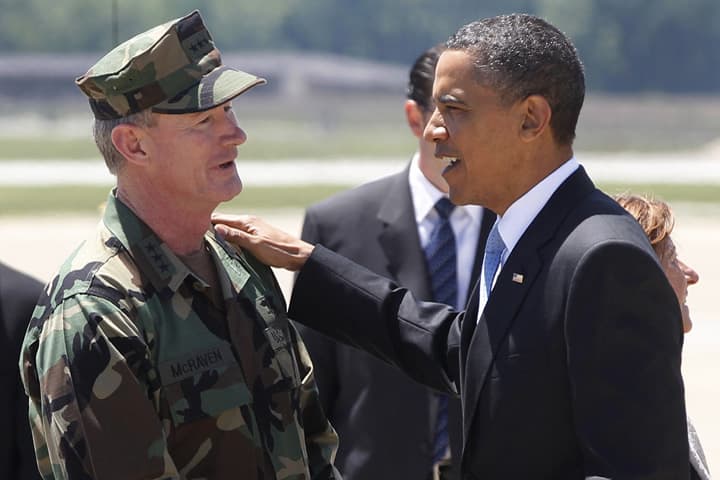Advertisement
The Real And Ongoing Story Of SEAL Team 6
ResumeThe US Navy's SEAL Team 6 took down Osama Bin Laden. A big new investigative report reveals the full extent of their global mission.

A huge report out this weekend on SEAL Team 6 – the special operations forces that killed Osama bin Laden. The New York Times spent a year digging in to the most elite, most deadly, most secretive force in the US military. What they found was a lot of killing, and rescue, and intelligence-gathering. An evolution in US force projection from big military to fierce, focused out-of-nowhere attacks that can show up almost anywhere – and do. It’s a gripping story with big questions attached. Their reporting staff is with us. This hour On Point: Deadly force, global reach, and SEAL Team 6.
-- Tom Ashbrook
Guests
Nicholas Kulish, writer and correspondent for the New York Times. (@nkulish)
Geoffrey Corn, professor of criminal military law at the South Texas School of Law. Retired US Army Lieutenant Colonel, whose last position was as the Army's senior expert on the laws of war.
John Arquilla, professor and chair of defense and analysis at the Naval Postgraduate School. Author of "Insurgents, Raiders and Bandits."
From Tom's Reading List
New York Times: SEAL Team 6: A Secret History of Quiet Killings and Blurred Lines — "They have plotted deadly missions from secret bases in the badlands of Somalia. In Afghanistan, they have engaged in combat so intimate that they have emerged soaked in blood that was not their own. On clandestine raids in the dead of the night, their weapons of choice have ranged from customized carbines to primeval tomahawks."
Washington Post: SEAL Team 6, the CIA and the secret history of U.S. kill missions in Afghanistan — "As the U.S. military focused heavily on the Iraq war in 2006, the general in charge of the secretive Joint Special Operations Command (JSOC) noticed something alarming: The Taliban was regrouping in Afghanistan, and the United States didn’t have the manpower there to stop it."
New Yorker: Getting Bin Laden — "Shortly after eleven o’clock on the night of May 1st, two MH-60 Black Hawk helicopters lifted off from Jalalabad Air Field, in eastern Afghanistan, and embarked on a covert mission into Pakistan to kill Osama bin Laden. Inside the aircraft were twenty-three Navy SEALs from Team Six, which is officially known as the Naval Special Warfare Development Group, or DEVGRU. A Pakistani-American translator, whom I will call Ahmed, and a dog named Cairo—a Belgian Malinois—were also aboard. It was a moonless evening, and the helicopters’ pilots, wearing night-vision goggles, flew without lights over mountains that straddle the border with Pakistan. Radio communications were kept to a minimum, and an eerie calm settled inside the aircraft."
This program aired on June 8, 2015.